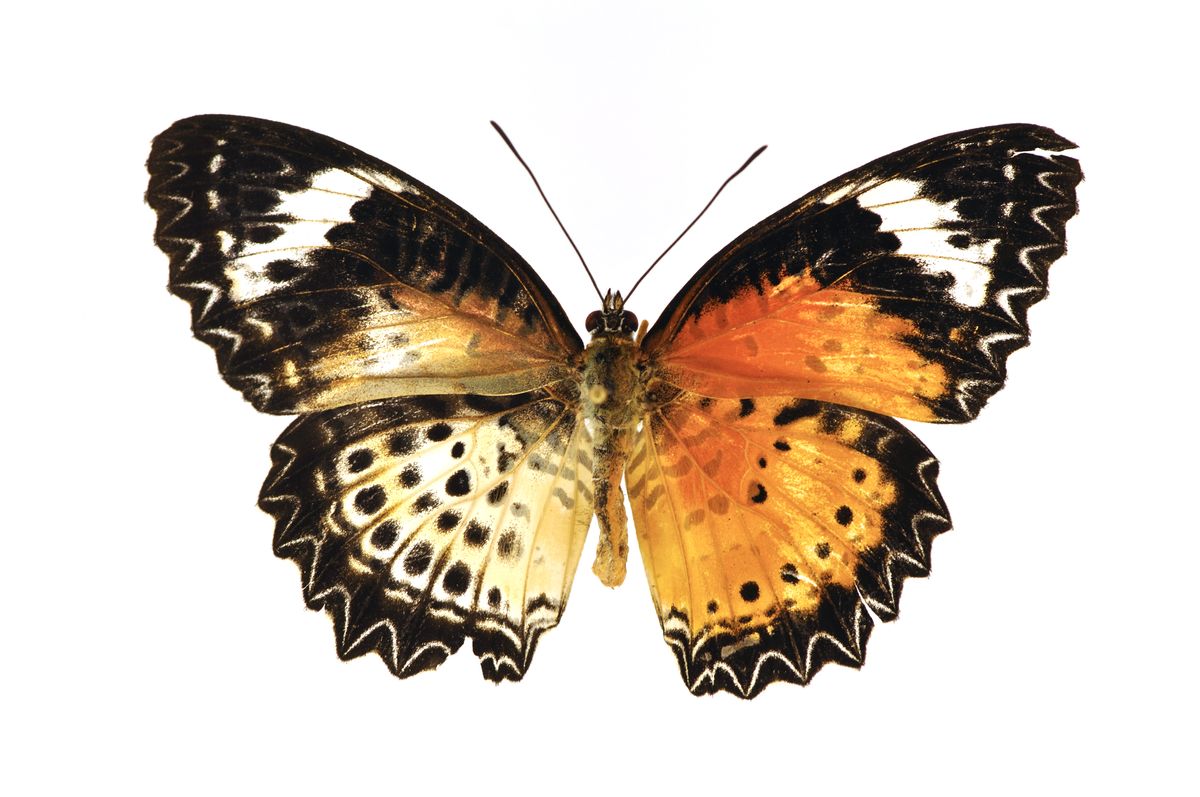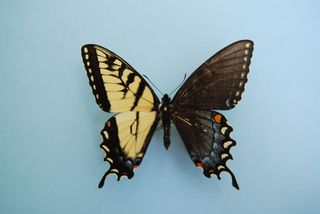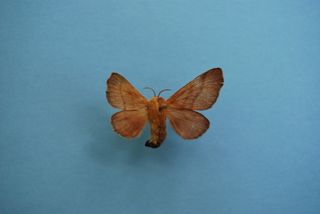Dual-sex bugs impress collectors

In April 2004, James Adams found an unusual tiger swallowtail butterfly. One side was nearly black, with signature blue and orange markings on the lower wing. The insect's other wing, however, sported a bright yellow. For a collector of butterflies and moths it was a rare find: a gynandromorph, a dual-sex creature.
A gynandromorph's body is part male, part female. In the most spectacular cases, called bilateral gynandromorphs, each sex gets half of the insect: wings, genitalia, body size and other sex-related features. [Gallery: Stunning dual-sex animals]

Adams found the tiger swallowtail at Pigeon Mountain in northwest Georgia, but the location doesn’t really matter, the professor of biology at Dalton State College in Georgia said.
"You never go out to look for those because they are genetic anomalies," Adams said, "you happen upon them."
Often nearly invisible
The first of these dual-sex insects he found was a forest tent caterpillar moth on the wall of a gas station underneath a light. This one was less spectacular, but more typical of the many gynandromorphs that may go unrecognized. A line down the middle of its body marks the division between the lighter, somewhat fluffier male side and the longer female side; the difference in length causes the abdomen to curl.
Gynandromorphy isn't unique to butterflies and moths; dual-sex bees, lobsters, spiders and crabs have been found, to name a few. But among many species males and females look alike, making for much less visually interesting gynandromorphs. This also makes it difficult to estimate their true frequency.
Sign up for the Live Science daily newsletter now
Get the world’s most fascinating discoveries delivered straight to your inbox.

How to make a gynander
Among some insects, as in humans, sex is determined by a set of two chromosomes. For us, two X chromosomes means female, and an X and a Y means male.
An insect can become a gynandromorph if the sex chromosomes do not properly separate during the first division of a fertilized egg. Because of this mistake, one of the resulting cells, and its descendants, end up with too many chromosomes while the other side gets too few. Depending on the chromosome code used by the species, these mismatched sets can read as male or female, resulting in an insect that has male cells in some parts of its body and female cells in others. An error later during development can result in the mosaic variety, in which patches of the body are male while others are female.
In addition, insect gynandromorphs can arise when an egg with two sex chromosomes, instead of the normal one, gets fertilized by two sperm. A symbiotic bacterial infection has also been linked to gynandromorphs in some insects, such as wasps, according research published in March 2010 in the journal Terrestrial Arthropod Reviews.
This particular sexual aberration is not believed to be possible for humans and mammals, because of the way our sex characteristics are determined, but it has been found among birds.
And how to lose one
Perhaps the most literary of insect gynandromorphs belonged to the Russian novelist Vladimir Nabokov, who studied and collected butterflies and moths.
In his autobiography, "Speak, Memory: An Autobiography Revisited" (Vintage, 1989), he recounts a childhood memory of his governess sitting upon his prized specimens, smashing them. He writes: "A precious gynandromorph, left side male, right side female whose abdomen could not be traced and whose wings had come off, was lost forever: one might re-attach the wings, but one could not prove that all four belong to that headless thorax on its bent pin."
You can follow LiveScience writer Wynne Parry on Twitter @Wynne_Parry. Follow LiveScience for the latest in science news and discoveries on Twitter @livescience and on Facebook.












